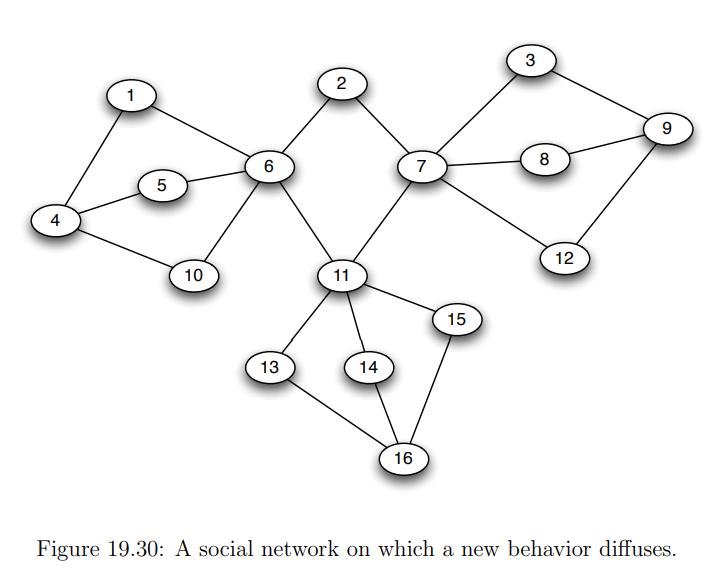Question
Consider the model for the diffusion of a new behavior through a social network. Suppose that initially everyone is using behavior B in the social
Consider the model for the diffusion of a new behavior through a social network. Suppose that initially everyone is using behavior B in the social network in Figure 19.30, and then a new behavior A is introduced. This behavior has a threshold of q = 1/2: any node will switch to A if at least 1/2 of its neighbors are using it.
(a) Find a set of three nodes in the network with the property that if they act as the three initial adopters of A, then it will spread to all nodes. (In other words, three nodes who are capable of causing a cascade of adoptions of A.)
(b) Is the set of three nodes you found in (a) the only set of three initial adopters capable of causing a cascade of A, or can you find a different set of three initial adopters who could also cause a cascade of A?
(c) Find three clusters in the network, each of density greater than 1/2, with the property that no node belongs to more than one of these clusters.
(d) How does your answer to (c) help explain why there is no set consisting of only two nodes in the network that would be capable of causing a cascade of adoptions of A? (I.e., only two nodes that could cause the entire network to adopt A.)
Figure 19.30:

1 5 10 6 13 2 11 14 16 7 15 3 8 12 Figure 19.30: A social network on which a new behavior diffuses.
Step by Step Solution
There are 3 Steps involved in it
Step: 1

Get Instant Access to Expert-Tailored Solutions
See step-by-step solutions with expert insights and AI powered tools for academic success
Step: 2

Step: 3

Ace Your Homework with AI
Get the answers you need in no time with our AI-driven, step-by-step assistance
Get Started


